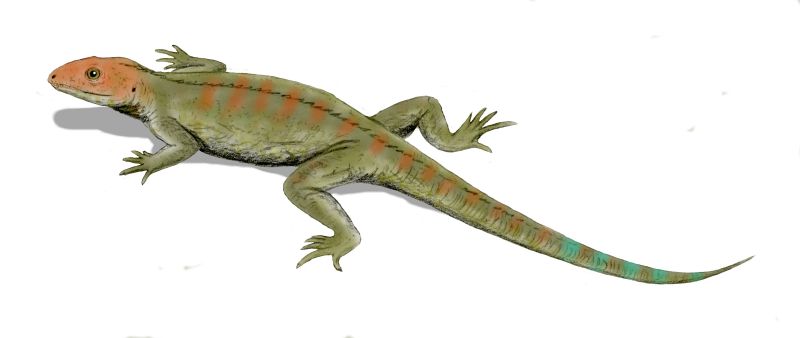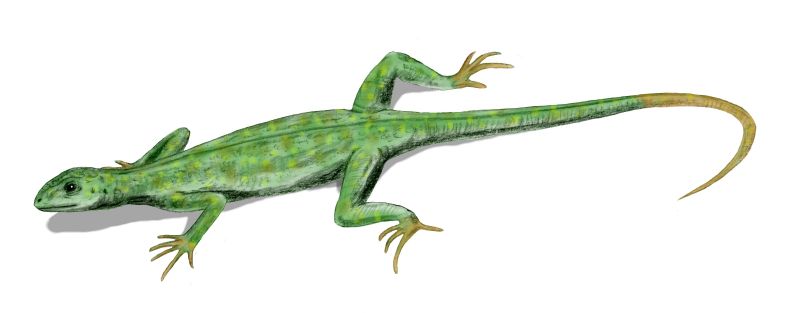석탄했 지질학적 기간 후 데본기 및 전에 콤플렉스. 그것은 약 359 에서 약 2 억 9 천 9 백만 년 전에 지속되었습니다. 그것은 고생대 시대와 Phanerozoic eon 의 다섯 번째시기입니다.
미국에서 Carboniferous 는 Mississippian(하부,359-323.2mya)과 Pennsylvanian(상부,323.2–299mya)으로 나뉩니다. 유럽에서는 하위,중간 및 상위 용어가 사용됩니다.,
척추 진화
초 물 흐름 분 번으로 두 개의 주요 그룹의 양서류는 그에 계란 물고 amniotes,사람이 그 cleidoic 계란에 빠지지 않을 수 없습니다. 양수는 서로 다른시기에 지배적으로 된 두 그룹을 낳았다. 그들은 결국 포유 동물을 낳은 synapsids 와 공룡과 다른 파충류를 낳은 sauropsids 였습니다. 이 중대한 사건들은 미시시피 인 카보 피아(Carboniferous)의 하부에서 일어났다.,
탄
석탄은 석탄을 측정,남아의 이탄에 의해 형성된 울창한 열대의 습지 숲이 있습니다. 두꺼운 껍질을 가진 새로운 종류의 혈관 식물이 숲에서 자랐습니다. 석탄의 많은 부분이이 나무 껍질에서 나왔습니다. 이 생물 군은 315-300 백만 년 전의 기간 인 펜실베이니아 어의 상부에서 발생했습니다.
이 숲은 적도에 있었고,항상 저지대 인 습지는 Laurussia 의 초 대륙을 가로 질러 뻗어있었습니다. 이것은 동쪽에 있는 중국에 지금 유럽이 인 무슨을 통해 서쪽에 있는 지금 북아메리카가,인 무슨을 포함했다., 습지의 중심부였던 강 평야는 캐나다 동부에서 우크라이나까지 5000km 뻗어있었습니다.p6
이런 종류의 기후와 지리학 정확한 병렬 오늘지만,이탄 늪 숲에서 인도네시아와 말레이지아,아마존 유역,미시시피 강 시스템과 오케페노키 늪에게 어떤 생각이 아니다. 늪은 lepidodendron 을 포함한 거대한 클럽 모스(clubmosses)에 의해 지배되었습니다. 그들은 가장 초기의 나무 였고 나중에 침엽수와 꽃 피는 식물로 대체되었습니다., 때로는 제방의 다른 식물들이 말꼬리,양치류 및 나무 같은 익룡과 같이 강가에 휩쓸 렸습니다.
습지 숲은 로우루시아에 대한 곤드와나 대륙의 압력에 의해 육지 수준이 높아지면서 끝났다. 이로 인해 접촉 영역이 상승했습니다. 석탄 대책의 끝은 탄화 기간의 끝을 표시합니다. 중국은 영향을 받기에는 너무 멀었다. 그곳에서 습지 숲은 페름기로 또 다른 5 천만 년 동안 계속되었습니다.,p30
Images for kids
-

Chart of regional subdivisions of the Carboniferous Period
-

Generalized geographic map of the United States in Middle Pennsylvanian time.,
-
Lower Carboniferous marble in Big Cottonwood Canyon, Wasatch Mountains, Utah
-

Etching depicting some of the most significant plants of the Carboniferous.,
-
Ancient in situ lycopsid, probably Sigillaria, with attached stigmarian roots.
-
Aviculopecten subcardiformis; a bivalve from the Logan Formation (Lower Carboniferous) of Wooster, Ohio (external mold).,
-

Bivalves (Aviculopecten) and brachiopods (Syringothyris) in the Logan Formation (Lower Carboniferous) in Wooster, Ohio.
-
Syringothyris sp.,; a spiriferid brachiopod from the Logan Formation (Lower Carboniferous) of Wooster, Ohio (internal mold).
-
Palaeophycus ichnosp.; a trace fossil from the Logan Formation (Lower Carboniferous) of Wooster, Ohio.,
-

Conulariid from the Lower Carboniferous of Indiana.
-

Tabulate coral (a syringoporid); Boone Limestone (Lower Carboniferous) near Hiwasse, Arkansas.,
-

Akmonistion of the shark order Symmoriida roamed the oceans of the early Carboniferous.,
-

The amphibian-like Pederpes, the most primitive Mississippian tetrapod
-

Hylonomus, the earliest sauropsid reptile, appeared in the Pennsylvanian.,
-

Petrolacosaurus, the first diapsid reptile known, lived during the late Carboniferous.
-

Archaeothyris was a very early synapsid and the oldest known.




